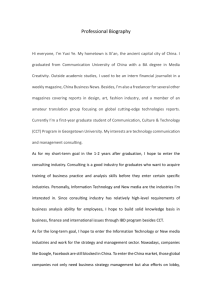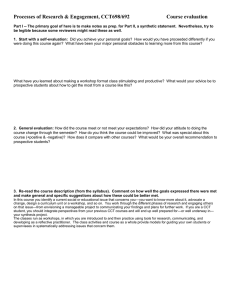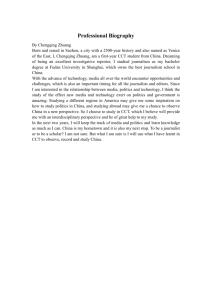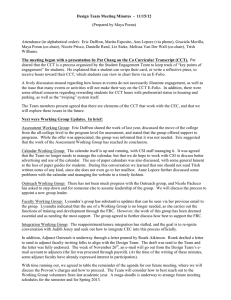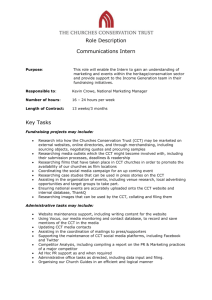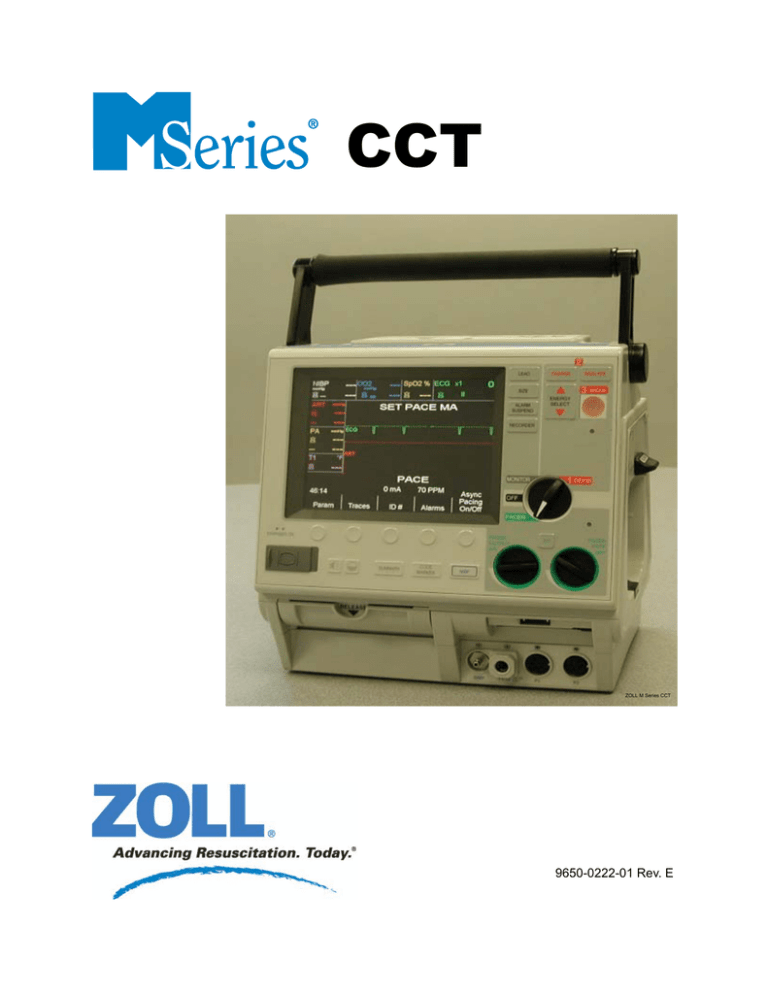
CCT
ZOLL M Series CCT
9650-0222-01 Rev. E
The issue date or revision level for this operation guide is shown on the front cover.
ZOLL and M Series are registered trademarks of ZOLL Medical Corporation.
All other trademarks and registered trademarks are property of their respective owners.
Copyright © 2008 ZOLL Medical Corporation. All rights reserved.
Table of Contents
PREFACE..................................................................................................................................................... V
How To Use This Manual ............................................................................................................. v
Safety Summary ........................................................................................................................... v
Indications for Use.......................................................................................................................vi
Contraindications for Use .............................................................................................................vi
THE M SERIES CCT .................................................................................................................................... 1
Introduction................................................................................................................................... 1
M Series CCT Option ................................................................................................................... 1
Reading the M Series CCT Display .............................................................................................. 2
USING THE M SERIES CCT OPTIONS ............................................................................................................ 3
Changing the Display Traces ....................................................................................................... 3
Connecting to an External VGA Display (monitor) ....................................................................... 5
Configuring Displayed Parameters by Color ................................................................................ 6
MAINTENANCE ............................................................................................................................................. 7
SPECIFICATIONS .......................................................................................................................................... 7
IEC 60601-1-2 Specifications ....................................................................................................... 9
Electromagnetic Emissions Declaration.................................................................................... 9
Electromagnetic Immunity Declaration (EID) .......................................................................... 10
EID for Life-Support Functions................................................................................................ 11
Recommended Separation Distances from RF Equipment for the M Series CCT ..................
Life-Support Functions....................................................................................................... 12
EID for Non–Life-Support Functions ....................................................................................... 13
Recommended Separation Distances from RF Equipment for the M Series CCT
Non–Life-Support Functions .............................................................................................. 14
ZOLL M Series CCT
iii
iv
ZOLL M Series CCT
Preface
How To Use This Manual
This manual insert describes the use of the M Series® CCT option.
CAUTION! The user must be familiar with the M Series before operating an M Series CCT. If
not familiar with the M Series, read the M Series Operator’s Guide and relevant
option inserts.
Before operating an M Series CCT, if you are unfamiliar with the M Series, read the M Series
Operator’s Guide and the relevant inserts. Thoroughly read the safety considerations and warnings
sections in both the M Series Operator’s Guide and the relevant option inserts. Consult the
Troubleshooting section of those manuals if the M Series CCT fails to operate as expected.
This insert includes information only on the features not found in the standard M Series units. Unless
otherwise noted in this insert, the M Series CCT features are identical to standard M Series features.
Place this insert in the three-ring binder with the M Series Operator’s Guide and all other option inserts.
Safety Summar y
The following is a short summary of warnings, cautions, and other safety information related to the
M Series CCT option. Additional warnings and cautions are in the text of this insert. Read this section
thoroughly before operating the M Series CCT.
• Read the M Series Operator’s Guide and this manual insert before use.
• The M Series CCT is to be operated by qualified personnel only.
• Do not use in the presence of oxygen-rich atmospheres, flammable anesthetics or other flammable
agents (such as gasoline). Do not use near the site of a gasoline spill. Explosion may result.
• Avoid using the M Series CCT adjacent to or stacked on other equipment. If unavoidable, check
that the M Series CCT operates normally in this configuration before clinical use.
• The device is protected against interference from radio frequency emissions typical of two-way
radios and cellular phones (digital and analog) used in emergency service/public safety activities.
Users should assess the device’s performance in their typical environment of use for the possibility
of radio frequency interference from high-power sources. Radio Frequency Interference (RFI) may
be observed as shifts in monitor baseline, trace compression, display brightness changes, or
transient spikes on the display.
• The M Series CCT should be installed and put into service according to the Electromagnetic
Compatibility (EMC) information provided in this insert.
• Route patient cabling and hoses carefully to avoid patient entanglement, strangulation or
compression of hose.
• Do not touch the bed, patient, or any equipment connected to the patient during defibrillation. A
severe shock to the operator can result.
• Do not allow exposed portions of the patient’s body to come in contact with metal objects, such as
a bed frame during defibrillation. Unwanted electrical pathways can result.
• If an alarm occurs while the alarms are suspended, audio alarm tones do not sound, only visual
alarm messages display.
ZOLL M Series CCT
v
Safety Summar y (cont.)
• Do not immerse the M Series CCT device, batteries, cables, or transducers in water, solvents, or
cleaning solutions.
• Do not sterilize M Series unit or accessories except as specifically recommended in ZOLL
manuals. Reusable transducers should be sterilized per the manufacturer’s instructions.
• Connect the ECG-out jack, VGA-out jack, and modem (if available) only to other equipment with
galvanically isolated circuits.
• When using the optional VGA video output connector, test system operation with target video
display device prior to clinical use. Testing should include the Daily Checkout Procedure (refer to
the M Series Operator’s Guide).
• When using the M Series CCT in an aircraft, fluctuations in cabin pressure can affect invasive
blood pressure (IBP) calibration. When cabin pressure fluctuates significantly due to altitude
changes, you must rezero the IBP transducer. We recommend that you rezero the IBP transducer
(1) After takeoff or landing when cabin pressure has stabilized; (2) Whenever the fluctuation in
cabin pressure is equivalent to the change in air pressure that occurs with a 500-foot (152-meter)
change in altitude.
Indications for Use
The M Series CCT indications for use are the same as for the standard M Series. For additional
information, refer to the M Series Operator’s Guide and user inserts for installed options.
Contraindications for Use
The M Series CCT contraindications for use are the same as for the standard M Series. For additional
information, refer to the M Series Operator’s Guide and user inserts for installed options.
vi
ZOLL M Series CCT
The M Series CCT
Introduction
The M Series CCT is an M Series unit with integrated features that provide additional display
capabilities. The following sections describe the additional features. A typical M Series CCT front
panel is shown in Fig. 1.
Softkey
VGA
Connector
(optional)
Contrast
Button
NIBP
Connector
IBP Channel 1
Connector
Temperature
Connector
IBP Channel 2
Connector
Figure 1: M Series CCT
NOTE: Refer to Section 2 of the M Series Operator’s Guide for the controls available on both the
M Series and the M Series CCT.
M Series CCT Option
In addition to the standard M Series features, the M Series CCT option can do the following:
• Display three traces simultaneously (Trace 1 is always ECG).
• Select which traces display in addition to ECG.
• Connect to an external VGA display (this feature is optional, only available through special
order).
• Configure displayed parameters by color.
ZOLL M Series CCT
1
Reading the M Series CCT Display
The M Series CCT display is similar to the M Series display, except for the following:
• M Series CCT units display three traces (except when in PACER and DEFIB modes, when
display messages take the place of Trace 3).
• IBP and Temperature have data display areas (if the unit has these options).
The IBP and Temperature data display areas are described in detail in the IBP insert and
Temperature insert. See Fig. 2 for their location on the display.
The M Series CCT three Trace display areas are shown in Fig. 2. The trace type for each display is
as follows:
• Trace 1 - reserved for ECG.
• Trace 2 - type of trace determined by user.
• Trace 3 - type of trace determined by user.
IBP Channel 1
(P1) Data
Display Area
Trace 1
ECG Trace
Display Area
IBP Channel 2
(P2) Data
Display Area
Trace 2
Display Area
Temperature
Data Display
Area
Trace 3
Display Area
Softkey Labels
Figure 2: M Series CCT display
NOTE: Depending on the options included in the M Series CCT, the front panel and display may
slightly differ from the illustrations in this insert. Each data display area is explained in detail
in the applicable option inserts.
2
ZOLL M Series CCT
Using the M Series CCT options
The following sections describe how to use the M Series CCT option.
Changing the Display Traces
Trace 1 always displays the ECG waveform. You may select or change the waveform display for
Traces 2 and 3. If the unit has the appropriate options, you can choose from the following parameters:
• 3 Lead ECG (uses all three display channels)
• IBP Channel 1 (P1)
• IBP Channel 2 (P2)
• EtCO2
• SpO2
When the unit is in PACER or DEFIB mode, display messages take the place of Trace 3.
Any changes made remain in effect until either the settings are changed or for 10 seconds after the
M Series is turned off (the 10 second interval allows settings to remain in effect when the battery is
changed).
Trace 2 and 3 are factory configured to be OFF when the unit is powered up. However, they can be
configured to display specific parameters on power-up (refer to the M Series CCT Configuration
Guide).
To select the displayed waveforms:
1. Press the Traces softkey (if the “Traces” softkey label is not displayed, press the Return
softkey until “Traces” displays, and press the Traces softkey).
The Traces menu display is shown in Fig. 3:
Figure 3: Traces Menu
2. Press the Select softkey to select “3 Lead ECG”, “Set Trace 2”, or “Set Trace 3.”
3. Press the Enter softkey.
4. If “3 Lead ECG” is selected:
• Traces 2 and 3 are set to ECG with each lead based on the active lead group. Trace 1 remains
set with the LEAD hard key. For example, if Trace 1 is set to Lead II with the LEAD hard
key, Trace 2 and 3 to are set to Lead I and Lead III respectively.
• For units with 12 Lead ECG option, Custom Lead groups may be set based on preconfigured
choices. For additional information, refer to the M Series CCT Configuration Guide and 12
Lead Operator’s Guide.
ZOLL M Series CCT
3
Changing the Display Traces (cont.)
4. If “3 Lead ECG” ...(cont.)
• Standard lead groups are listed below.
- I, II, III
- aVR, aVL, aVF
- V1,V2, V3
- V4, V5, V6
5. If “Set Trace 2” or “Set Trace3” is selected:
The Trace Options menu displays (see Fig. 4):
Figure 4: Trace Options Menu
6. Press the Select softkey to select the type of waveform you want to display. You cannot
select a waveform that is already displayed.
7. Press the Enter softkey. The unit displays the waveform for the selected parameter.
To change the other trace, repeat steps 1 through 7.
4
ZOLL M Series CCT
Connecting to an External VGA Display (monitor)
An external VGA display (monitor equipped with industry standard 15-pin VGA connector) can be
connected to an M Series CCT unit that is equipped with the optional VGA connector(
symbol)
on the front panel shown in Fig. 1.
To connect the VGA display:
1. Open the rubber boot to expose the connector.
2. Attach the monitor’s cable to the connector.
WARNING! Always test the M Series CCT with the target VGA display prior to clinical use. The
tests should include the Daily Checkout Procedure (refer to M Series Operator’s
Guide).
To conserve battery life, the VGA output port is not active when the M Series CCT is initially
powered up.
To enable or disable the VGA output port:
1. Press the CONTRAST button (see Fig. 1 on page 1), the Contrast menu appears (see Fig. 5):
Softkey toggle
status with VGA
active
Figure 5: Contrast menu
2. To enable (activate) the VGA output port, press the Enable VGA Out softkey; the port is
enabled and the softkey label toggles to “Disable VGA Out.”
NOTE: The softkey toggles according to current state of the port.
NOTE: When the port is enabled and the M Series CCT is powered down (turned off or
battery is removed) and then powered up within 10 seconds, the port remains
enabled. When power is off for more than 10 seconds, the port is disabled (the default
state).
3. To disable (deactivate) the VGA output port, press the Disable VGA Out softkey; the port
is disabled and the softkey label toggles to “Enable VGA Out.”
ZOLL M Series CCT
5
Configuring Displayed Parameters by Color
The M Series CCT allows you to select the colors used to display numerics and waveforms
associated with each physiological parameter (e.g.: ECG, SpO2, EtCO2, NIBP, Invasive pressure 1
and pressure 2, Temperature, etc.).
The parameter display colors available are Red, Cyan, Purple, Blue, Green, Yellow, and White.
Parameter display colors are factory configured as indicated below.
Parameter
Color
ECG
Green
SpO2
Yellow
EtCO2
Blue
NIBP
White
Temp
Purple
P1
Red
P2
Cyan
ART
Red
PA
Yellow
CVP
Cyan
ICP
White
To reconfigure a parameter’s display color, please refer to the M Series CCT Configuration Guide.
6
ZOLL M Series CCT
Maintenance
Perform all periodic maintenance of the M Series CCT per the M Series Operator’s Guide and the
supplemental inserts for any other options.
Specifications
Unless described below, M Series CCT specifications are identical to M Series specifications. Refer
to the M Series Operator’s Guide for details.
Table: General Specifications
Size: w/ NIBP, IBP, Temp:
w/o NIBP, IBP, Temp:
10.2” (25.9 cm) high x 10.3” (26.2 cm) wide x 8.7” (22.1 cm) deep
8.6” (21.8 cm) high x 10.3” (26.2 cm) wide x 8.7” (22.1 cm) deep
Weight:
17.2 lbs (7.8 kg) with Multi-function cable and battery
19.2 lbs (8.71 kg) with above and paddles
ac Power:
100-120 V, 50/60 Hz; 220-240 V, 50 Hz; 220 VA
dc Input (Optional):
10-29 V, 130 W
Device Classification:
Class I and internally powered per EN 60601-1
Class II and internally powered per EN 60601-1 (DC input only)
Design Standards:
Meets or exceeds UL 2601, AAMI DF-39, AAMI DF-2, IEC 601-2-4,
EN 60601-2-25, and EN 60601-2-27
Patient Safety:
All patient connections are electrically isolated.
Table: Display Specifications
Screen Type:
Active Matrix Color LCD
Screen Size:
6.5” (16.51 cm) diagonal
Number of Pixels:
640 x 480
Sweep Speed:
25 mm/s
Video Output:
Industry standard VGA, 640 x 480, 60 Hz (optional)
Table: Battery Specifications (XL Battery Pack)
Type:
Rechargeable, sealed lead acid
Weight:
3.7 lbs (1.68 kg)
Voltage:
2 volts/cell; 5 cells wired in series
Recharge Time:
7.2 hours or less with integral charger
Operating Time;
For a new, fully charged XL
battery pack at 20°C:
60 defibrillator discharges at maximum energy (200 J), or 2.5 hours
minimum of continuous ECG and SpO2 monitoring, or 1.5 hours of
continuous ECG, SpO2, EtCO2, IBP, and Temperature monitoring/pacing at
60 mA, 70 beats per minute.
ZOLL M Series CCT
7
Specifications (cont.)
Table: Environmental Specifications
8
Operating Temperature:
32° to 122° F (0° to 50° C)
Storage and Shipping Temperature:
-4° to 140° F (-20° to 60° C)
NOTE: The M Series CCT device may not perform to specifications
when removed from storage at either the upper or lower
extreme temperature limits and immediately put into use.
Humidity:
5 to 95% relative humidity, noncondensing.
Vibration:
Mil Std 810 E, Minimum Integrity Test
Shock:
IEC 68-2-27, 50g 6mS half sine
Operating Pressure:
594 to 1060 millibars
Material Ingress:
IEC 529, IP23
Electromagnetic Compatibility (EMC):
CISPR 11 Class B - Radiated and Conducted Emissions
Electromagnetic Immunity:
AAMI DF-2: 1996, EN 61000-4-3: 2002, 15 V/m
Electrostatic Discharge:
AAMI DF-2: 1996, EN 61000-4-2: 1995
Conducted Susceptibility:
IEC 61000-4-4: 1995, EN 61000-4-5: 1995, EN 61000-4-6: 1996
ZOLL M Series CCT
IEC 60601-1-2 Specifications
This section provides specification tables for the M Series CCT as per IEC 60601-1-2.
Electromagnetic Emissions Declaration
Guidance and manufacturer’s declaration — electromagnetic emissions for the M Series CCT.
The M Series CCT is intended for use in the electromagnetic environment specified below. The customer or
user of the M Series CCT should ensure that it is used in such an environment.
Emissions test
Compliance
Electromagnetic environment – guidance
RF Emissions
CISPR 11
Group 1
The M Series CCT uses RF energy for its internal function only.
Therefore, its RF emissions are very low and are not likely to
cause any interference in nearby electronic equipment.
RF Emissions
CISPR 11
Class B
The M Series CCT is suitable for use in all establishments,
including domestic establishments and those directly connected to
the public low-voltage power supply network that supplies
buildings used for domestic purposes.
Harmonic Emissions
IEC 61000-3-2
Class A
Voltage Fluctuations/
Flicker Emissions
IEC 61000-3-3
Complies
ZOLL M Series CCT
9
Electromagnetic Immunity Declaration (EID)
Guidance and manufacturer’s declaration — electromagnetic immunity for the M Series CCT.
The M Series CCT is intended for use in the electromagnetic environment specified below. The customer or
user of the M Series CCT should ensure that it is used in such an environment.
Electromagnetic environment –
guidance
Immunity test
IEC 60601 test level
Compliance level
Electrostatic
discharge (ESD)
IEC 61000-4-2
±6 kV contact
±8 kV air
±6kV contact
±8 kV air
Floors should be wood, concrete, or
ceramic tile. If floors are covered with
synthetic material, the relative
humidity should be at least 30%.
Electrical fast
transient/burst
IEC 61000-4-4
±2 kV for power supply
lines
±1 kV for input/output
lines
±2 kV for power
supply lines
Not applicable
Mains power quality should be that of
a typical commercial or hospital
environment.
Surge
IEC 61000-4-5
±1 kV differential mode
±2 kV common mode
±1 kV differential
mode
±2 kV common mode
Mains power quality should be that of
a typical commercial or hospital
environment.
Voltage dips,
short interruptions
and voltage
variations on
power supply
input lines.
IEC 61000-4-11
<5% UT (>95% dip in UT)
for 0.5 cycle
40% UT (60% dip in UT)
for 5 cycles
70% UT (30% dip in UT)
for 25 cycles
<5% UT (>95% dip in UT)
for 5 seconds
<5% UT (>95% dip in
UT) for 0.5 cycle
Mains power quality should be that of
a typical commercial or hospital
environment. If the user of the
M Series CCT requires continued
operation during power mains
interruptions, it is recommended that
the M Series CCT be powered by an
uninterruptible power supply or a
battery.
3 A/m
3 A/m
Power frequency
(50/60 Hz)
magnetic field.
IEC 61000-4-8
40% UT (60% dip in
UT) for 5 cycles
70% UT (30% dip in
UT) for 25 cycles
<5% UT (>95% dip in
UT) for 5 seconds
Power frequency magnetic fields
should be at levels characteristic of
typical location in a typical commercial
or hospital environment.
NOTE: UT is the ac mains voltage prior to the application of the test level.
10
ZOLL M Series CCT
EID for Life-Support Functions
Guidance and manufacturer’s declaration – electromagnetic immunity – for life-supporting
equipment and systems.
The life-support functionsa of the M Series CCT are intended for use in the electromagnetic environment
specified below. The customer or user of the M Series CCT should ensure that it is used in such an environment.
Immunity test
IEC 60601 test
level
Compliance
level
Electromagnetic environment – guidance
Portable and mobile RF communications equipment
should be used no closer to any part of the M Series
CCT, including cables, than the recommended
separation distance calculated from the equation
applicable to the frequency of the transmitter.
Recommended separation distance
Conducted RF
IEC 61000-4-6
3 Vrms
150 kHz to 80 MHz
10 Vrms
d = 0.35
√P
outside ISM bandsb
10 Vrms
150 kHz to 80 MHz
10 Vrms
d = 1.2
√P
d = 0.6
√P 80 MHz to 800 MHz
d = 1.2
√P 800 MHz to 2.6 GHz
b.
in ISM bands
Radiated RF
IEC 61000-4-3
10 V/m
80 MHz to 2.5 GHz
20 V/m
where P is the maximum output power rating of the
transmitter in watts according to the transmitter
manufacturer and d is the recommended separation
distance in meters.c
Field strengths from fixed RF transmitters, as
determined by electromagnetic site survey,d should
be less than the compliance level in each frequency
range.e
Interference may occur in the vicinity of equipment
marked with the following symbol:
NOTE 1: At 80 MHz and 800 MHz, the higher frequency range applies.
NOTE 2: These guidelines may not apply in all situations. Electromagnetic propagation is affected by absorption
and reflection from structures, objects, and people.
a. The life-support functions on the M Series CCT are defined to be any function associated with ECG monitoring,
pacing, defibrillation, and shock analysis. Specifically, these functions include, but are not limited to, the ECG waveform
monitoring from leads or pads, the pacing pulse output, QRS detection, defibrillation energy discharge, and shock
advisory functions.
b. The ISM (industrial, scientific, and medical) bands between 150 kHz and 80 MHz are 6.765 MHz to 6.795 MHz;
13.553 MHz to 13.567 MHz; 26.957 MHz to 27.283 MHz; and 40.66 MHz to 40.70 MHz.
c. The compliance levels in the ISM frequency bands between 150 kHz and 80 MHz and in the frequency range 80 MHz
to 2.5 GHz are intended to decrease the likelihood that mobile/portable communications equipment could cause
interference if it is inadvertently brought into patient areas. For this reason, an additional factor of 10/3 is used in
calculating the recommended separation distance for transmitters in these frequency ranges.
d. Field strengths from fixed transmitters, such as base stations for radio (cellular/cordless) telephones and land mobile
radios, amateur radio, AM and FM radio broadcast and TV broadcast cannot be predicted theoretically with accuracy.
To assess the electromagnetic environment due to fixed RF transmitters, an electromagnetic site survey should be
considered. If the measured field strength in the location in which the M Series CCT is used exceeds the applicable RF
compliance level above, the M Series CCT should be observed to verify normal operation. If abnormal performance is
observed, additional measures may be necessary, such as reorienting or relocating the M Series CCT.
e. Over the frequency ranges 150 kHz to 80 MHz field strength should be less than 10 V/m.
ZOLL M Series CCT
11
Recommended Separation Distances from RF Equipment for
the M Series CCT Life-Support Functions
Recommended separation distances between portable and mobile RF communications equipment
and the M Series CCT.
The life-support functionsa of the M Series CCT are intended for use in the electromagnetic environment in
which radiated RF disturbances are controlled. The customer or user of the M Series CCT can help prevent
electromagnetic interference by maintaining a minimum distance between portable and mobile RF
communications equipment (transmitters) and the M Series CCT as recommended below, according to the
maximum output power of the communications equipment.
Rated maximum
output power of
equipment
(in watts)
Separation distance according to frequency of transmitter
(in meters)
150 kHz to 80 MHz
outside ISM bands
d =0.35 √P
150 kHz to 80 MHz
in ISM bands
d =1.2 √P
80 MHz to 800 MHz
d =0.6 √P
800 MHz to 2.5 GHz
d =1.2 √P
0.01
0.035
0.12
0.06
0.12
0.1
0.11
0.38
0.19
0.38
1
0.35
1.2
0.6
1.2
10
1.1
3.8
1.9
3.8
100
3.5
12
6
12
For transmitters rated at a maximum output power not listed above, the recommended separation distance d in
meters can be determined using the equation applicable to the frequency of the transmitter, where P is the
maximum output power rating of the transmitter in watts according to the transmitter manufacturer.
NOTE 1: At 80 MHz and 800 MHz, the separation distance for the higher frequency range applies.
NOTE 2: The ISM (industrial, scientific, and medical) bands between 150 kHz and 80 MHz are 6.765 MHz to
6.795 MHz; 13.553 MHz to 13.567 MHz; 26.957 MHz to 27.283 MHz; and 40.66 MHz to 40.70 MHz.
NOTE 3: An additional factor of 10/3 is used in calculating the recommended separation distances for
transmitters in the ISM frequency bands between 150 kHz and 80 MHz and in the frequency range 80 MHz to
2.5 GHz to decrease the likelihood that mobile/portable communications equipment could cause interference if
it is inadvertently brought into patient areas.
NOTE 4: These guidelines may not apply in all situations. Electromagnetic propagation is affected by
absorption and reflection from structures, objects, and people.
a. The life-support functions on the M Series CCT are defined to be any function associated with ECG monitoring,
pacing, defibrillation, and shock analysis. Specifically, these functions include, but are not limited to, the ECG
waveform monitoring from leads or pads, the pacing pulse output, QRS detection, defibrillation energy discharge, and
shock advisory functions.
12
ZOLL M Series CCT
EID for Non–Life-Support Functions
Guidance and manufacturer’s declaration – electromagnetic immunity – for non–life-supporting
equipment and systems.
The non–life-support functionsa of the M Series CCT are intended for use in the electromagnetic environment
specified below. The customer or user of the M Series CCT should ensure that it is used in such an
environment.
Immunity test
IEC 60601 test level
Compliance level
Electromagnetic environment – guidance
Portable and mobile RF communications
equipment should be used no closer to any
part of the M Series CCT, including cables,
than the recommended separation distance
calculated from the equation applicable to the
frequency of the transmitter.
Recommended separation distance
Conducted RF
IEC 61000-4-6
3 Vrms
150 kHz to 80 MHz
3 Vrms
Radiated RF
IEC 61000-4-3
3 V/m
80 MHz to 2.5 GHz
15 V/m
d = 1.2
√P
d = 0.23
√P 80 MHz to 800 MHz
d = 0.47
√P 800 MHz to 2.6 GHz
where P is the maximum output power rating
of the transmitter in watts according to the
transmitter manufacturer and d is the
recommended separation distance in meters.
Field strengths from fixed RF transmitters, as
determined by electromagnetic site survey,b
should be less than the compliance level in
each frequency range.c
Interference may occur in the vicinity of
equipment marked with the following symbol:
NOTE 1: At 80 MHz and 800 MHz, the higher frequency range applies.
NOTE 2: These guidelines may not apply in all situations. Electromagnetic propagation is affected by absorption
and reflection from structures, objects, and people.
a. The non–life-support functions on the M Series CCT are defined to be any function not listed as a life-support function
in the “EID for Life-Support Functions” table (Note a). Specifically, these functions are the Invasive Blood Pressure (IBP)
channels, the Temperature channels, the Non-invasive Blood Pressure (NIBP), End-Tidal CO2 (EtCO2), and SpO2.
b. Field strengths from fixed transmitters, such as base stations for radio (cellular/cordless) telephones and land mobile
radios, amateur radio, AM and FM radio broadcast and TV broadcast cannot be predicted theoretically with accuracy.
To assess the electromagnetic environment due to fixed RF transmitters, an electromagnetic site survey should be
considered. If the measured field strength in the location in which the M Series CCT is used exceeds the applicable RF
compliance level above, the M Series CCT should be observed to verify normal operation. If abnormal performance is
observed, additional measures may be necessary, such as reorienting or relocating the M Series CCT.
c. Over the frequency ranges 150 kHz to 80 MHz field strength should be less than 3 V/m.
ZOLL M Series CCT
13
Recommended Separation Distances from RF Equipment for
the M Series CCT Non–Life-Support Functions
Recommended separation distances between portable and mobile RF communications equipment
and the M Series CCT.
The non–life-support functionsa of the M Series CCT are intended for use in the electromagnetic environment in
which radiated RF disturbances are controlled. The customer or user of the M Series CCT can help prevent
electromagnetic interference by maintaining a minimum distance between portable and mobile RF
communications equipment (transmitters) and the M Series CCT as recommended below, according to the
maximum output power of the communications equipment.
Rated maximum
output power of
equipment
(in watts)
Separation distance according to frequency of transmitter
(in meters)
150 kHz to 80 MHz
d =1.2 √P
80 MHz to 800 MHz
d =0.23 √P
800 MHz to 2.5 GHz
d =0.47 √P
0.01
0.12
0.02
0.05
0.1
0.38
0.07
0.15
1
1.2
0.23
0.47
10
3.8
0.73
1.5
100
12
2.3
4.7
For transmitters rated at a maximum output power not listed above, the recommended separation distance d in
meters can be determined using the equation applicable to the frequency of the transmitter, where P is the
maximum output power rating of the transmitter in watts according to the transmitter manufacturer.
NOTE 1: At 80 MHz and 800 MHz, the separation distance for the higher frequency range applies.
NOTE 2: These guidelines may not apply in all situations. Electromagnetic propagation is affected by absorption
and reflection from structures, objects, and people.
a. The non–life-support functions on the M Series CCT are defined to be any function not listed as a life-support function
in the “EID for Life-Support Functions” table (Note a). Specifically, these functions are the Invasive Blood Pressure (IBP)
channels, the Temperature channels, the Non-invasive Blood Pressure (NIBP), End-Tidal CO2 (EtCO2), and SpO2.
14
ZOLL M Series CCT



